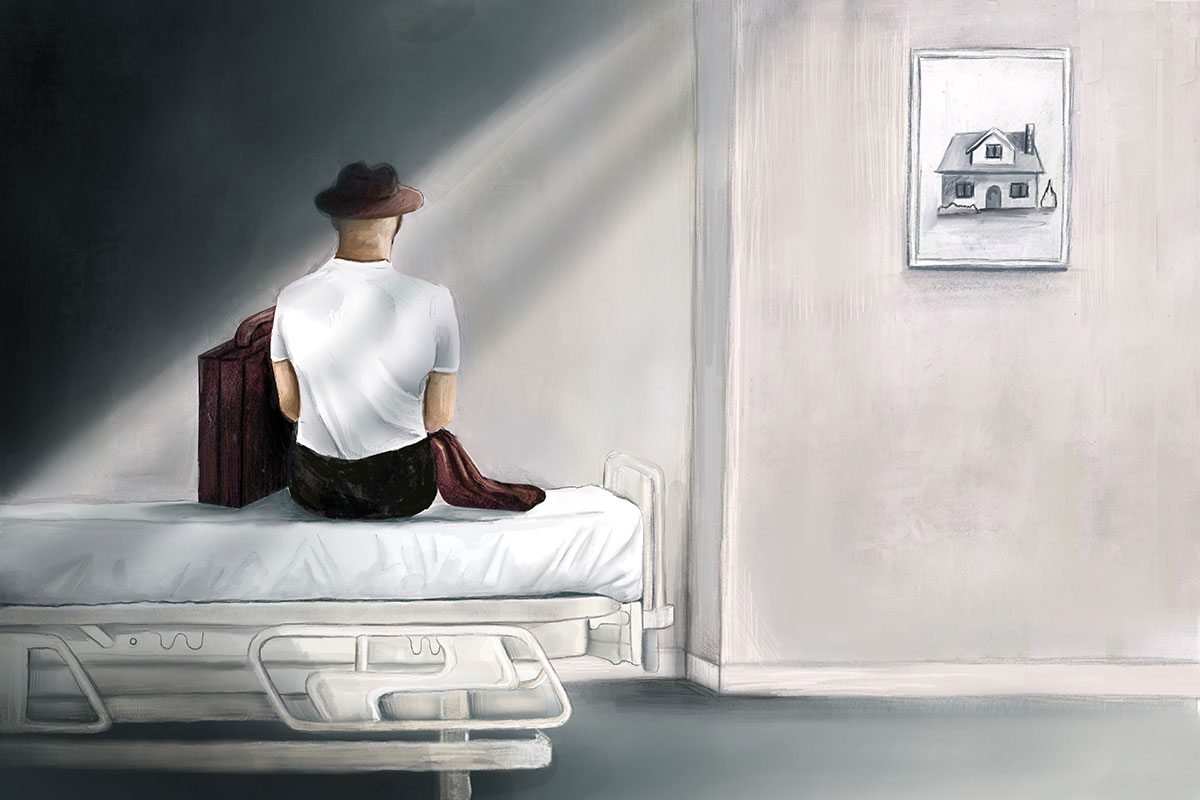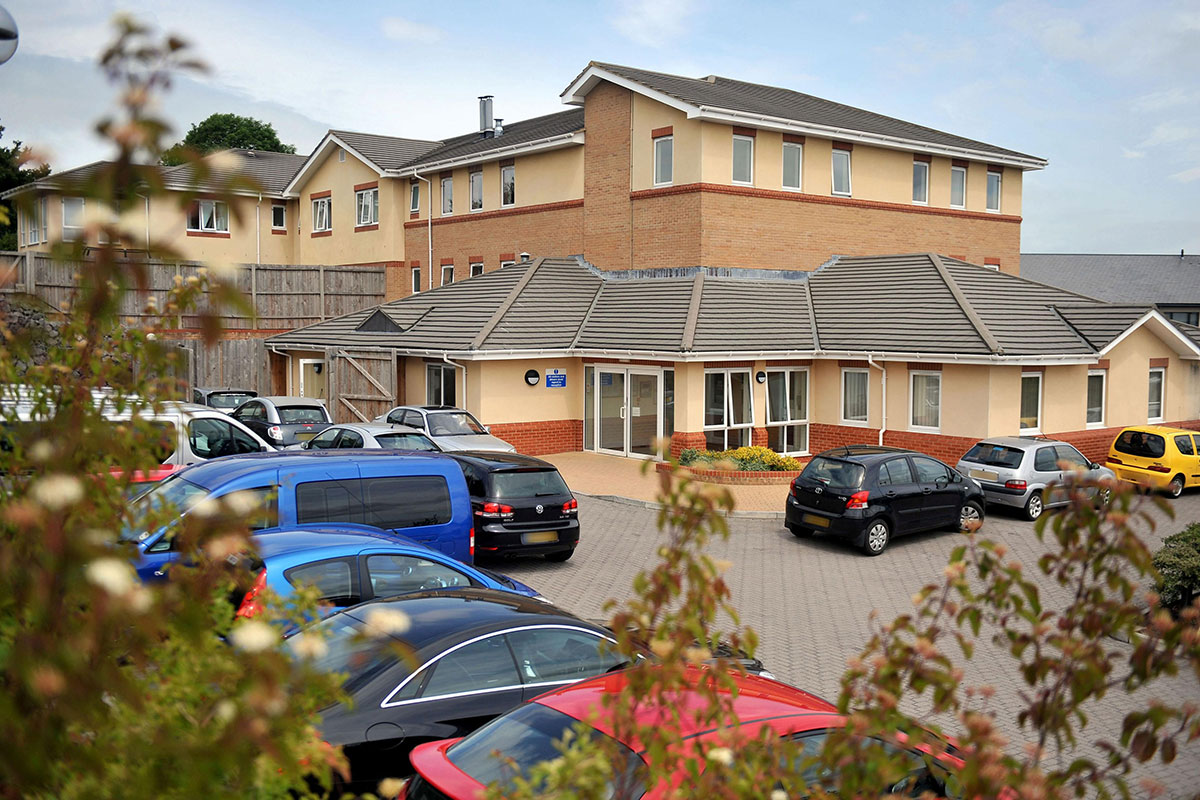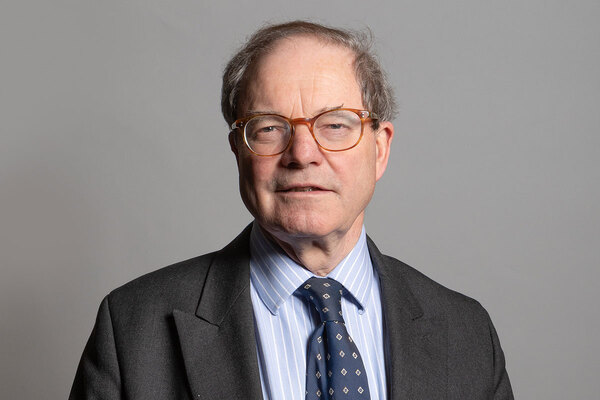You are viewing 1 of your 1 free articles
Waiting to leave: why hundreds of adults are languishing in hospital unnecessarily
Housing shortages are leaving hundreds of adults with learning disabilities and autism in long-stay hospital beds. Darren Devine finds out more. Illustration by Grace Russell and photography by Press Association/National Housing Federation
They are places that trace their origins back to the asylums of the Victorian era. But while the chains, handcuffs and filth have long since been confined to the past, the social alienation remains.
The average time patients spend in specialist hospitals for people with autism and learning disabilities is more than two years, according to NHS statistics. For some, the stay is much longer still.
Tony Hickmott is 41 years old and has been in one such institution for 18 years. His mother, Pam, says he has been well enough for discharge since 2003.
Every Thursday, she and her husband Roy make the 180-mile round trip to see their son in Cedar House, a 40-bedroom secure unit near Canterbury.
They have tried to resettle him near the family home in Brighton.
"While the chains, handcuffs and filth have long since been confined to the past, the social alienation remains"
More recently, a plan evolved to settle Mr Hickmott into a bungalow but the family insist the accommodation would be unsuitable because it fails to follow his care plan.
He ended up in hospital because as his parents got older they couldn’t provide around-the-clock care. But Ms Hickmott insists he presented few challenging behaviours at home.
Since his admission, however, Mr Hickmott has suffered injuries including a broken arm, black eyes and extensive bruising.
The Huntercombe Group, which has run the hospital since 2011, says that, following an investigation, no evidence was found that any of its staff acted inappropriately in the case of Mr Hickmott.
Cases like his prompted a change of tack from government when it came to long-term care, switching the preferred setting from hospitals to homes and communities.
A 2015 NHS initiative, ‘Transforming Care’, sought to cut the number of inpatients, instead providing care on the principle of “homes not hospitals”. It targeted a reduction in hospital bed use for people with autism and learning difficulties of between 35% and 50% by March 2019.
But limited progress has been made and as that date approaches, numbers have been cut by only 20%, according to figures from the Department of Health and Social Care.
Experts say one of the greatest obstacles to the government achieving its aim has been a lack of suitable supported housing.
Indeed, the NHS’ ‘Building the Right Home’ document, which outlines the principles behind Transforming Care, states that inappropriate housing increases the likelihood of challenging behaviour and a hospital readmission.
“A significant increase in housing options for people with a learning disability and/or autism will enable people to access the right home and support at the right time,” it reads.
But research from learning disability charity Mencap in 2016 revealed that 82% of local authorities said they had a shortage of suitable housing for adults with a learning disability.
There is little sign that the situation has improved since.
More recent statistics from NHS England show that in December last year “lack of suitable housing provision” accounted for 38% of delayed discharges.
So if there isn’t enough suitable housing, what are the government and housing providers doing to fix an apparently broken system?
Moving these vulnerable people out of hospitals and into their own homes seems like a logical solution.
Last December, a report by the National Autistic Society (NAS) found of the 2,350 people still in long-stay hospital beds, 665 no longer needed to be there.
Mr Hickmott’s case is an illustration of the battle families face when trying to house loved ones. Ms Hickmott says the bungalow the family was offered was “totally unsuitable” because it failed to follow his care plan. He would have been one of several people living in the property and the plans included putting a hatch on his bedroom door.
His parents feel the scheme would simply mean moving him from a hospital to an institution in the community.
Building the Right Home says that under Transforming Care, people should have a choice about “where they live and who they live with”, but Ms Hickmott says the bungalow plan was “just totally ignoring Transforming Care”.
“Me and my husband weren’t allowed to visit,” she adds. “They didn’t think about my family that haven’t seen him in 18 years.”
It is easy to see why families would want to see their loved ones moved out of hospital care. Statistics obtained by the BBC show the use of restraints on adults with learning disabilities in hospital units in England rose by 50% between 2016 and 2017.
Then last November, the government announced that the deaths of at least 40 people admitted to secure hospitals since 2015 are being reviewed.
Moving these vulnerable people out of hospitals and into their own homes seems like a logical solution. But Jim Aspdin, director of housing at Sussex-based Southdown Housing Association, says building supported housing can be difficult.
In the same year Transforming Care was launched, then-chancellor George Osborne announced a 1% rent cut for social landlords. The cut was deferred for supported housing for a year but went ahead for most in 2017/18.
Mr Aspdin, whose association has 650 supported housing properties, says the move left many of his peers wary of providing these properties.
A 2017 report by then-social housing regulator the Homes and Communities Agency described supported housing as a “relatively low-margin activity”.
The Care Quality Commission guidance suggests six should be the maximum number of properties on one Transforming Care supported housing site. Although Southdown is building six flats as part of a £1.5m supported housing scheme in Brighton, Mr Aspdin believes this limit also puts pressure on providers when it comes to viability.
“If you then have a look at a specialist supported housing scheme, let’s say a Transforming Care scheme, you really don’t have any opportunity in that to [cross-subsidise],” he explains. “You’re not going to have a mix of tenures in that scheme really.
“You’re looking for very specific, designed accommodation and, probably, that forms the whole of your development.”
“Me and my husband weren’t allowed to visit. They didn’t think about family that haven’t seen him in 18 years” - Pam Hickmott, mother of Tony Hickmott
Catherine Ryder, head of policy at the National Housing Federation, said Transforming Care had the “right ambition” as “the right housing would give people a much improved quality of life and greater independence”.
She adds: “But finding the right house in the right area alongside care and support services requires long-term planning and effective joint working between housing associations, local authorities and the NHS.
“Specialist housing is more expensive to build and maintain and needs both upfront funding to cover building costs as well as ongoing cash for support and care costs.”
Specific measures are needed from the government to increase the number of homes and to help councils pay for services that meet local needs, suggests Ms Ryder.
Tim Nicholls, policy manager at NAS, says having the right community services in place is “probably the biggest stumbling block” to hospital discharges.
“A key part of this is making sure the right housing is in place,” he explains.
“Obviously, you’ll also need other things like community mental health provision, social care support for your daily living and you might need support to find employment if that’s right for you.”
Jayne Knight, former chief executive of supported living charity the Ling Trust, believes people are effectively “unlawfully detained” in hospital because they would have nowhere to live if they left.
She adds: “Key to that, obviously, is to have a house to go to, a roof over your head, to actually go to somewhere.”
Winterbourne View, a residential hospital near Bristol, where undercover footage of patient abuse was filmed by investigators from the BBC’s Panorama programme, leading to four arrests and a police probe
Another problem is that hospital care for people with learning disabilities and autism is paid for by the NHS, but often provided by the private sector.
Though the NHS can make clear its intentions on commissioning private beds, experts say it’s up to independent providers to decide whether to close them.
Some see the lucrative profits involved in keeping vulnerable people in a long-stay hospital as one of the biggest obstacles to their discharge.
Lancaster University’s 2017 report A Trade in People put the value of the “inpatient healthcare market” in 2015/16 at £284m.
Researchers described how the healthcare economy “turns people into commodities and liabilities”. For private hospitals, it said, they represent “millions of pounds of income and profit”.
Meanwhile, families are fighting a system “where the bottom line isn’t somebody’s clinical need, it’s profit”.
The report concludes that hospital stays may be “systematic and institutionalised breaches” of articles five and eight of the European Convention on Human Rights, protecting liberty and a private and family life.
An NHS England spokesperson says that since 2015, it has achieved the “biggest single shift in care for people with a learning disability or autism in history”.
This has supported 635 more people who had been in hospital for over five years to live as independently as possible in a community.
“The NHS long-term plan continues to build on significant progress, investing in earlier intervention and ramping up specialist community services, including seven-days-a-week crisis care, all of which will reduce the need for inpatient care,” adds the spokesperson.
But many in the care sector believe there’s still a lot of work to do, and are unsure whether Transforming Care can be the answer.
Prime minister Theresa May
In the wake of the 2011 Winterbourne View scandal, where the BBC’s Panorama uncovered evidence of patients with learning difficulties being abused by staff, former charity boss Sir Stephen Bubb authored one of the key reports that urged an end to controversial long-stay hospital care.
Sir Stephen, whose report Winterbourne View – Time for Change was published in 2014, believes changing the care system didn’t need to be as big a challenge as it’s proved to be.
Before the 2015 Transforming Care targets were set, he says, the government envisaged moving everyone inappropriately placed in institutions back into the community by June 2014. When this failed, the government gave itself another five years to hit the less ambitious target of closing 35% to 50% of beds.
When prime minister Theresa May unveiled the NHS 10-year plan in January, the new target was halving the 2015 number of people in hospitals by 2023/24. In practice, this will mean cutting the number currently standing at 2,325 back to about 1,440.
But given that the first target was missed and the second seems certain to go the same way, Sir Stephen, who is head of the thinktank Charity Futures, says he is “not confident at all” about future success.
“I’d be astonished if we saw progress,” he adds. “I’m afraid the history, sadly, in this area is that progress is only ever made when there’s a scandal or someone writes a report.”














